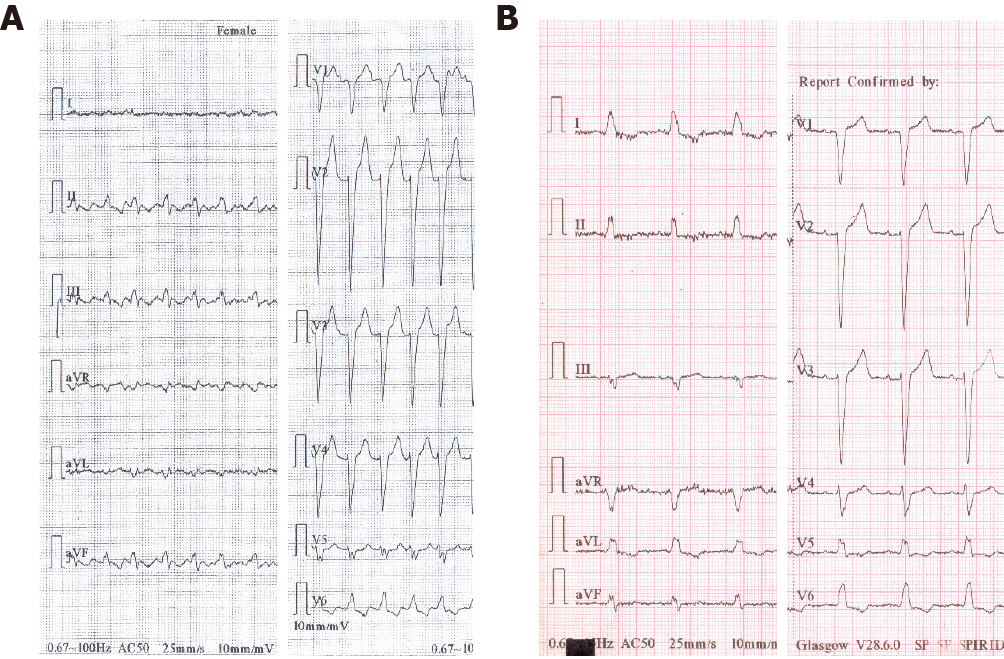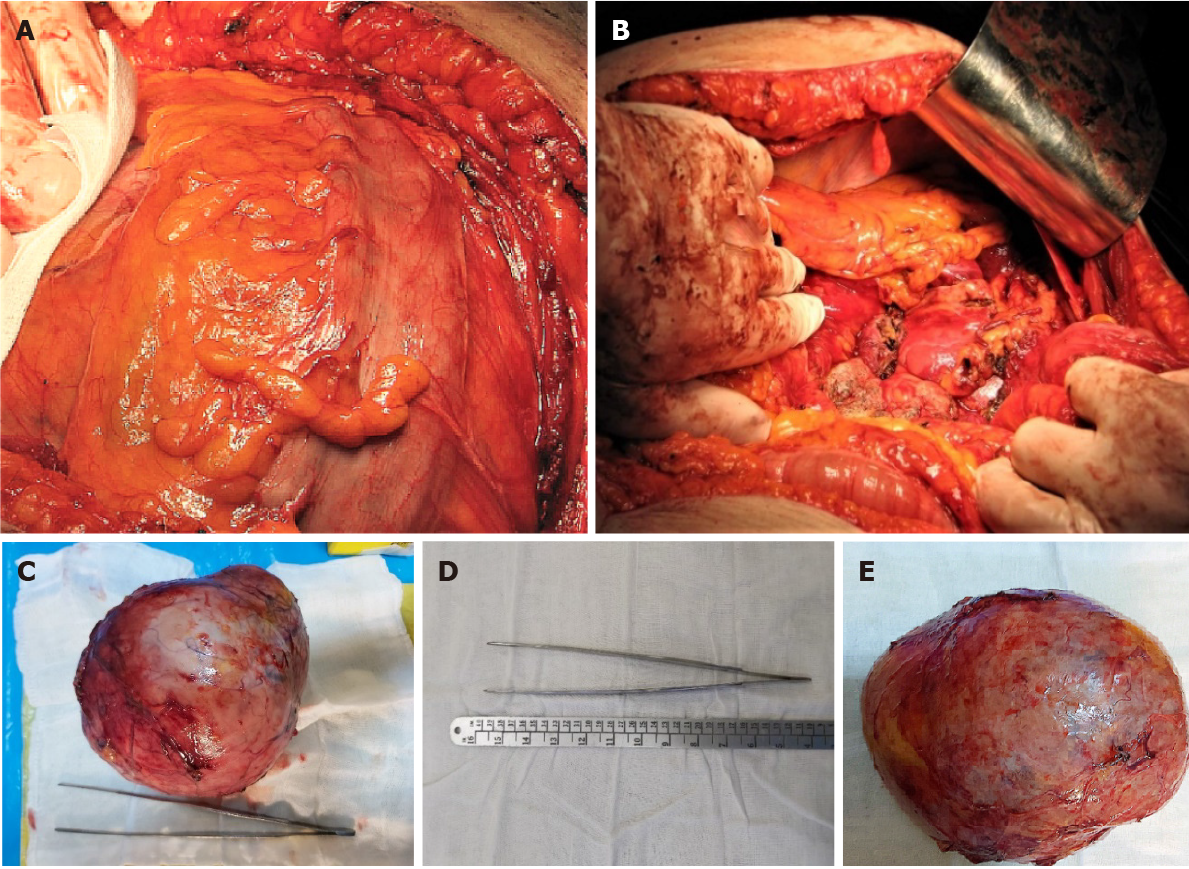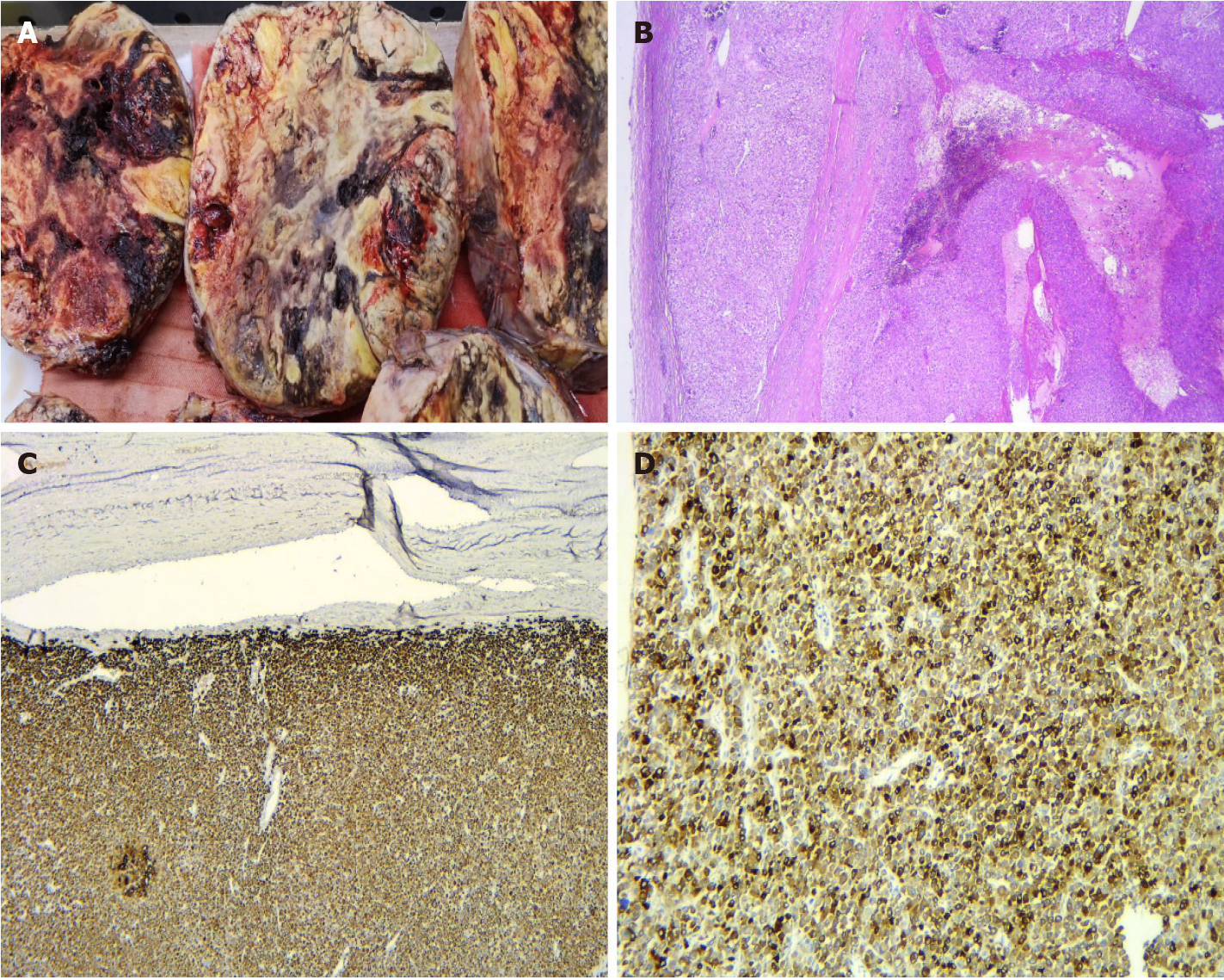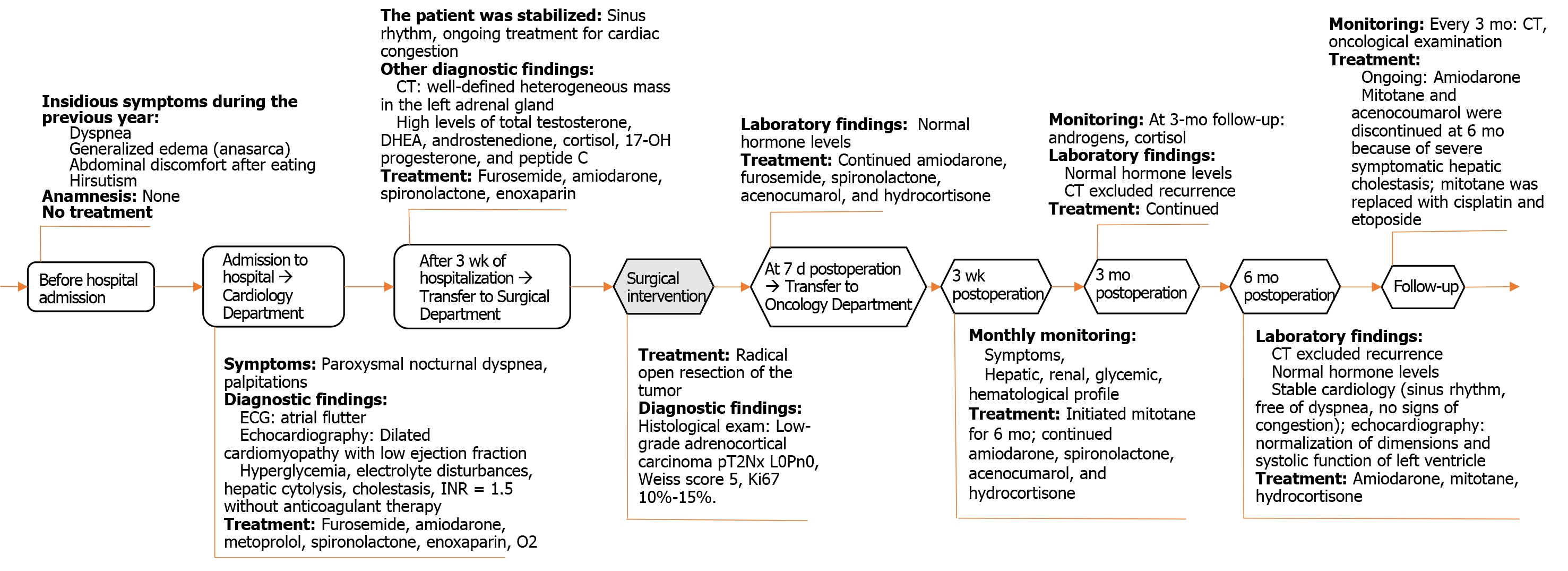Copyright
©The Author(s) 2021.
World J Clin Cases. Jul 16, 2021; 9(20): 5575-5587
Published online Jul 16, 2021. doi: 10.12998/wjcc.v9.i20.5575
Published online Jul 16, 2021. doi: 10.12998/wjcc.v9.i20.5575
Figure 1 Large left side abdominal mass.
Figure 2 Twelve-lead electrocardiogram.
A: On admission: Typical atrial flutter and 2:1 atrioventricular conduction with left bundle branch block; B: Preoperative: Sinus rhythm with left bundle branch block.
Figure 3 Abdominal computed tomography–arterial acquisition, maximum intensity projection reformatted planes.
A: Coronal view showing a well-defined heterogeneously enhancing mass in the left adrenal gland, with central calcifications and non-enhancing necrotic areas, with arterial blood supplied from the aorta and left renal artery, and upward displacement of the stomach; B: Sagittal view showing a well-defined heterogeneous mass in the left upper quadrant displacing the left kidney; C: Oblique view displaying the relationship of the lesion with the left renal arterial pedicle.
Figure 4 Pseudocapsulated tumor.
A: Macroscopic view of en bloc specimen of an encapsulated mass with smooth contours, with no evidence of invasion, weighing 2100 g, with dimensions of 21 cm × 17 cm × 12 cm; B: Final aspect after removing the tumor; C and E: Macroscopic view of the resected tumor; D: Detailed view of tumor measurements.
Figure 5 Adrenocortical carcinoma.
A: Large solitary circumscribed tumor with a variegated appearance on the cut surface due to hemorrhage and necrosis; B: Diffuse architecture of the tumor and capsular invasion (hematoxylin & eosin, × 25); C: Intense positivity for Melan A in tumor cells (immunohistochemistry, × 25); D: Intense positivity for synaptophysin (immunohistochemistry, × 200).
Figure 6 Case history timeline.
CT: Computed tomography; DHEAS: Dehydroepiandrosterone sulfate; ECG: Electrocardiogram; INR: International normalized ratio.
- Citation: Costache MF, Arhirii RE, Mogos SJ, Lupascu-Ursulescu C, Litcanu CI, Ciumanghel AI, Cucu C, Ghiciuc CM, Petris AO, Danila N. Giant androgen-producing adrenocortical carcinoma with atrial flutter: A case report and review of the literature. World J Clin Cases 2021; 9(20): 5575-5587
- URL: https://www.wjgnet.com/2307-8960/full/v9/i20/5575.htm
- DOI: https://dx.doi.org/10.12998/wjcc.v9.i20.5575














